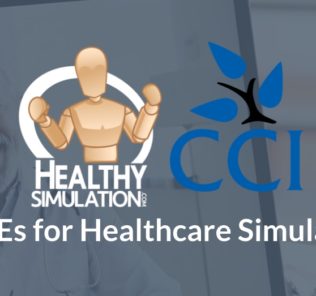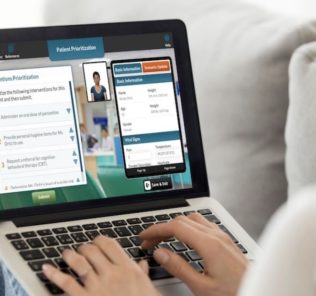Most Watched Nursing Simulation CE Webinars
Nursing Simulation is becoming a must-know skill set for nursing educators and clinical nurse trainers. To advance the field of clinical simulation in nursing, HealthySimulation.com hosts weekly CE webinars, many of which focus on nursing-specific topics. With over 300 recorded CE/CME webinars available on the HealthySimulation.com LEARN CE/CME platform, and many more events recorded each week, nursing simulation champions can find the must-know insights to help them develop a nursing simulation program at an educational or clinical institution. Here then are the most-watched nursing simulation CE webinars from HealthySimulation.com:
4 CE Course: Nursing Simulation for Instructors (Deb Tauber MSN, RN, CHSE, CEN): This self-paced 4+ hour Continuing Education (CE) course is designed for nursing faculty and clinical instructors. The course will provide the foundation needed to understand the basic components of clinical simulation and its importance within nursing education, including ideas for faculty who are just starting to teach clinical. This course breaks down simulation into short modules, covering each facet of simulation, experiential and immersive learning. The information provided will expose new and experienced clinical instructors to simulation’s best practices and help them navigate through the complex myriad of concepts, equipment and technology.
Introducing INACSL’s New Simulation Standard: Prebriefing (INACSL Standards Committee Members): In August of 2021 the new and updated Healthcare Simulation Standards of Best Practice (formerly known as the International Nursing Association of Clinical and Simulation Learning standards) were published. Included in this publication was a new standard: Prebriefing: Preparation and Briefing. Prebriefing ensures that learners are prepared for the educational content of a simulation and are also informed about the expectations of them during the simulation-based experience. Because the current literature refers to prebriefing as both preparatory activities and briefing activities, this new standard incorporates both as pre- simulation activities. Historically, the terminology related to prebriefing has varied and included numerous terms. The lack of consistency in terminology can create confusion for educators and simulationists. Standardization of terminology and methodology can help to create more standardization in future use.
Sponsored Content:
Is VR the Future of Nurse Education and Training? A Panel Review (Sarah Friend, DNP, ARNP, FNP-C): This panel presentation offers perspectives on Virtual Reality simulation research and its impacts on new and continuing nursing education and training. Panelists include nurses and nursing educators from top institutions in the U.S. The intention of this panel is to help participants gain a better understanding of Virtual Reality simulation as it compares to traditional simulation methods in the context of improving the efficacy of nursing training. As more research is conducted on VR medical simulations, educators and learners can begin to see the true impact of growing technologies on the future of nursing training and continued education.
Immersive VR: How to Make a Virtual Nurse Education Program Into Reality (Sue Schuelke, PhD RN CNE CHSE CCRN-K): This CE presentation will focus on how to integrate an immersive virtual reality (VR) program into an undergraduate BSN curriculum. Utilizing Kotter’s change model, we will discuss how to prepare, implement, and evaluate an virtual reality nursing simulation program. Lessons learned and challenges of incorporating new simulation technology will be discussed and actions to meet these challenges will be presented. Tools that can be used to plan your IVR program implementation will be discussed. Study results will be shared related to learning and engagement.
Designing Your Nursing Simulation Center for Current and Projected Needs (Anne Costello, MSN, RN, CHSE):As many nrusing educational programs look to increase enrollment, the need for increased physical space for clinical skills and medical simulation training is often a major consideration. The program’s simulation director or coordinator are often the one approached with the question, “If we were to increase enrollment, what would you need?” While exciting, this ask can also be incredibly overwhelming to those new to simulation center design and planning. This webinar will provide an overview of considerations for those who are anticipating a renovation or build of a new nursing simulation center. Highlights will include recommended processes for conceptualizing a medical simulation center design to fit your program’s needs, who to include in your planning, questions to ask your architecture team, considerations for designing flexible and adaptable spaces, and lessons learned in our design and planning phase.
Growing a One-Room Rural Nursing Simulation Program into a Fully Integrated Simulation Center (Janet Richards Coe, MSN, RN, CHSE): Integration of nursing simulation into nursing education in a rural setting can be challenging due to limited resources and training. Montana Technological University’s Sherry Lesar School of Nursing grew its nurse simulation program from a one room show into a 5000 square foot simulation center. The Lesar Family Nursing Simulation Center includes 4 simulation rooms, 4 debrief rooms, a medication room, nurse’s station, and a telehealth suite with an integrated audio-visual system and learning management system. This center was 100% funded by private donations and led to a $7 million dollar donation to the nursing program, which at the time was the largest donation ever given in the history of the school. The success of this program is a result of incorporating best practices, networking, utilization of existing resources, and building a team of clinical simulation champions. Watch this webinar to see how your healthcare simulation program can expand nursing simulation across an entire program’s curriculum for increased nurse learner outcomes!
Sponsored Content:
Integrating Quality Clinical Simulation Into Your Nursing Program (Angie Turner – MSN, MMBA, RN, CHSE): The integration of healthcare simulation into nursing programs has surged in the last 10 years. It is a well-known fact that undergraduate nursing programs have limited clinical sites available, paving the way for nursing simulation as a supplement for clinical experiences. Integrating healthcare simulation best practices, nursing regulatory requirements, and academia accreditation can be daunting to say the least! This CE presentation will aid those new to healthcare simulation leadership, or for a current nursing program looking to implement or reform a quality clinical simulation program rooted in best practices.
Improving Associate Degree Nursing Outcomes with Virtual Simulation (Laura Gonzalez, PhD, APRN, CNE, CHSE-A, ANEF, FAAN): Associate degree nursing education in the US offers accessible affordable quality instruction to a diverse student population. Typical ADN enrollment includes large numbers of underrepresented low-income students. Unfortunately, many ADN programs are underfunded which means community colleges often lack the essential resources required to support faculty development. Recent research has identified 4 barriers to quality learning outcomes among ADN learners: 1) active learning 2) technological barriers 3) support and 4) communication (Jowsey et al., 2020). Virtual simulation is an affordable solution that can be incorporated into the nursing curriculum seamlessly. When used correctly it can help bridge the gap between traditional simulation and clinical placement, it can be used for remediation and assessment. This session will review best practices when adopting a screen-based solution. We will explore the value of screen-based simulation in the ADN nursing program and make curricular recommendations.
Extending Reality: The Latest in Technology Mediated Nursing Simulation (Laura Gonzalez, PhD, APRN, CNE, CHSE-A, ANEF, FAAN):Simulation has been integral to the nursing education curriculum for many years and has integrated high-level technology since the 1990s. As technology-driven simulators (manikins) have increased, educators have increased their knowledge and skills and incorporated best practices and standards to create, facilitate, and debrief a variety of nursing simulations. As the technology options become available the use of computer-based simulations, virtual and augmented reality simulations using head-mounted displays or HMD are becoming more widespread. This CE presentation will discuss the use of these new forms of technology-mediated nursing simulations. A brief overview of the “Extended Reality” (XR) technologies will be presented, along with educational frameworks that have been used with virtual education, exemplars and a brief review of some key literature in this area will be shared.
Elsevier Maximizes Nursing Simulation Learning System with SimX Virtual Reality Training (Tyler Andre, MD): Elsevier’s Simulation Learning System (SLS) with Virtual Reality (VR) form SimX was specifically designed for nursing students and is a complete solution for enhancing a learner’s clinical decision-making skills, bridging the gap between lecture and clinicals, and offers powerful assessment tools in an engaging and realistic virtual environment. This innovative solution is the largest and most comprehensive virtual reality curriculum for nursing education ever created. It reduces the need for sim labs, manikins, and associated equipment. Join us as SimX and Elsevier discuss back and forth the development of this revolutionary education tool and its applications today. Learn how SLS with VR allows for the highest fidelity sim training and preparation for the Next Gen NCLEX-RN Exam. Find out how each scenario includes crucial pre- and post- simulation activities, debriefing guidance, an academic EHR, and more.
And coming up next is From Screen to Scene: How UbiSim’s Immersive VR Transforms Nursing Education, so register now!
View All the CE/CME Sim Webinars Here!
Lance Baily, BA, EMT-B, is the Founder / CEO of HealthySimulation.com, which he started in 2010 while serving as the Director of the Nevada System of Higher Education’s Clinical Simulation Center of Las Vegas. Lance also founded SimGHOSTS.org, the world’s only non-profit organization dedicated to supporting professionals operating healthcare simulation technologies. His co-edited Book: “Comprehensive Healthcare Simulation: Operations, Technology, and Innovative Practice” is cited as a key source for professional certification in the industry. Lance’s background also includes serving as a Simulation Technology Specialist for the LA Community College District, EMS fire fighting, Hollywood movie production, rescue diving, and global travel. He and his wife live with their two brilliant daughters and one crazy dachshund in Las Vegas, Nevada.
Sponsored Content:


















